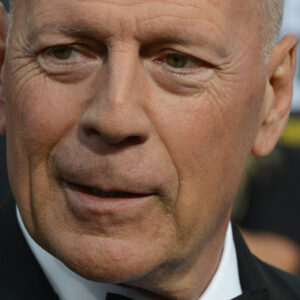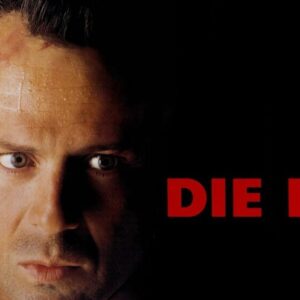In 1985, the world saw the birth of one of the most monumental musical collaborations ever to hit the airwaves—a song that wasn’t merely about entertainment but about saving lives. “We Are the World,” co-written by Michael Jackson and Lionel Richie, wasn’t just a melody destined to top the charts; it was a global movement. A cry for help for the millions suffering from famine in Africa, and a beacon of hope. Under the collective banner of USA for Africa, the world’s most recognizable voices joined forces to raise awareness and funds for famine relief in Africa, particularly Ethiopia, where the situation had become a humanitarian crisis.
The Birth of a Charity Anthem
The genesis of “We Are the World” can be traced back to the alarming famine that swept through Africa in the early 1980s, most notably in Ethiopia. The images and stories emerging from the region were harrowing—families devastated, communities decimated, and an overwhelming sense of helplessness pervading the world. In the face of this suffering, global citizens began to ask, “What can we do?”
Enter Harry Belafonte, an American singer, actor, and social activist, who had long used his platform to address societal ills. Inspired by the success of Band Aid’s 1984 charity single, “Do They Know It’s Christmas?” in the United Kingdom—spearheaded by Bob Geldof to raise money for African famine relief—Belafonte had a vision: to create an American equivalent that would reach across the globe. The objective wasn’t only to raise funds but to use the universal language of music to stir compassion and unify people from all walks of life.
Belafonte reached out to famed music manager Ken Kragen, who immediately saw the potential. With the spotlight now on the project, two megastars were approached to craft the anthem: Michael Jackson and Lionel Richie. At this point in the mid-1980s, Jackson was riding a wave of success following the massive triumph of Thriller—a juggernaut of an album that had revolutionized the music industry. Richie, too, was enjoying the fruits of a successful solo career, having just released Can’t Slow Down, which cemented his place as a global icon.
Writing the Anthem
The songwriting process for “We Are the World” unfolded with careful precision. Jackson and Richie, though stylistically distinct in their approach to music, found common ground in their desire to communicate a message of unity, love, and responsibility. According to Lionel Richie, the writing process was intense, but both men understood the gravity of what they were crafting. This wasn’t just another pop song—it was a call to action.
Michael Jackson’s genius is well-documented, but his contributions to “We Are the World” went beyond mere lyrics or melody. He poured his soul into the project, recognizing that his voice carried the weight of influence. Every line, every note, had to reflect the urgency of the cause. Jackson later remarked that the song needed to convey both sorrow and hope—an acknowledgment of the world’s pain but also an unwavering belief in the power of human kindness.
In January 1985, the song was completed, and the wheels were set in motion for what would become an unforgettable recording session.
The Night of the Recording: A Historic Event
January 28, 1985. This was no ordinary night at the A&M Recording Studios in Los Angeles. Under the meticulous direction of the legendary Quincy Jones, who had produced Michael Jackson’s Thriller and whose musical prowess was unparalleled, more than 40 of the biggest names in music gathered to lend their voices to “We Are the World.”
Stevie Wonder, Diana Ross, Bob Dylan, Ray Charles, Paul Simon, and Bruce Springsteen were just a few of the luminaries present. As they stepped into the studio, they left behind their individual stardom for a greater cause. For one night, these icons became part of something bigger than themselves—a collective determined to make a difference. As Quincy Jones famously instructed them beforehand, “Check your egos at the door.”
The energy in the room was palpable. Many of these artists had never collaborated before, yet on this night, their purpose was singular. Michael Jackson, ever the perfectionist, arrived at the studio fully prepared, not just to sing but to guide others through the song’s emotional and technical nuances. His voice would lead the chorus, his passion would drive the session.
The recording itself was an extraordinary display of both musical talent and human spirit. Paul Simon’s haunting vocals, Bruce Springsteen’s gritty intensity, and Ray Charles’ soulful delivery fused together in harmony. Bob Dylan, who had initially expressed doubts about his role, provided one of the most distinctive and heartfelt contributions. It was a night where every note, every breath, felt like a step toward healing the world.
The Release and Immediate Impact
On March 7, 1985, “We Are the World” was released to the public. The response was immediate and overwhelming. The song shot to the top of the charts worldwide, capturing the hearts of millions. But it wasn’t just about the music—people were moved by the mission. The world was facing a crisis, and here was an anthem calling on everyone to take action.
“We Are the World” sold more than 20 million copies, making it one of the best-selling singles of all time. The accompanying music video, which showed the stars working together in the studio, further fueled the movement. It wasn’t just the fans who were captivated; world leaders and humanitarians applauded the effort. Everyone was talking about USA for Africa, and the song became a powerful symbol of what could be achieved when people united for a common cause.
Beyond the Music: The Humanitarian Impact
The financial impact of “We Are the World” was staggering. In its first year alone, the song generated over $63 million for famine relief in Africa. The funds were managed by USA for Africa, a nonprofit organization established specifically for this project. The money was distributed carefully, ensuring that it reached those most in need. Millions of lives were affected as food, medical supplies, and infrastructure aid made its way to devastated communities across Ethiopia and surrounding countries.
But the impact of “We Are the World” went beyond dollars and cents. It ignited conversations about global inequality, the responsibility of wealthy nations to aid those in crisis, and the role of celebrities in advocacy. Michael Jackson, often portrayed as a reclusive and enigmatic figure, was thrust into the spotlight not just for his music but for his deep-rooted commitment to humanitarian causes.
Jackson’s role in the project wasn’t a mere cameo; it was central. Alongside Richie, he had crafted the very words that moved the world to action. His lead vocals on the track underscored his belief in the song’s message. For Jackson, this was a way to use his platform for something larger than fame. It was the beginning of a philanthropic journey that would see him continue to support causes related to children’s welfare, education, and the environment.
The Legacy of “We Are the World”
More than three decades have passed since “We Are the World” was released, yet its legacy endures. The song has been re-recorded, most notably in 2010 following the Haiti earthquake, where a new generation of artists came together to raise funds for disaster relief. Though the music industry has changed, and the media landscape is different, the core message of “We Are the World” remains relevant: that in times of crisis, unity and compassion are paramount.
Michael Jackson’s contribution to the song cemented his status as not only a musical genius but as a humanitarian who recognized the potential for art to inspire change. His belief in the power of music to transcend borders and heal divides is evident in every note of “We Are the World.”
Conclusion
“We Are the World” wasn’t just a moment in music history; it was a movement. It was a reminder of the power of collective action, the responsibility that comes with privilege, and the enduring human spirit’s ability to rise above adversity. Michael Jackson’s involvement in the project exemplified his commitment to making the world a better place through his art.
As we look back on “We Are the World,” it stands as a testament to what can happen when people come together for a greater purpose. It’s more than just a song—it’s a symbol of hope, compassion, and the universal language of music. And as long as there are challenges facing humanity, the song’s message will continue to resonate, reminding us all that we are, indeed, the world.





